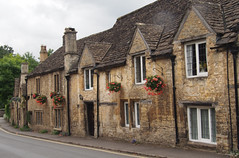The kit lens that comes with the Panasonic GH-1 is the unique Lumix G HD 14-140mm f/4-5.8 OIS lens which took over 12 months to develop to ensure it is optimised for silent contrast detect AF HD video with stepless aperture for smooth exposure adjustments, but how does it compare with similar 10x zoom lenses?
Dpreview.com has posted test results of the Lumix lens here which shows that this is a very sharp lens for a 10x zoom, particularly in the 18-50mm range.
- 28-280mm coverage, 62mm filter, HD AF video capable
- 460g, 70x84mm
- sharp across the frame especially from 18-50mm, even wide open
- geometric distortion and CA is being corrected in Panasonic software, and is therefore negligible across most of the image range
- 0.2x macro at 0.5m
Their summary states “The 14-140mm puts in a very good performance for a superzoom in our studio tests – it’s at its best in the 18-50mm range, but gets soft towards the long end of the zoom. It’s more or less on a par with the cream of the current crop of APS-C image-stabilised superzooms such as the Tamron 18-270mm F3.5-5.6 VC, and therefore marginally more consistent than the 18-200mm zooms from Canon and Nikon. Thanks to the use of software corrections, it registers minimal distortion or lateral chromatic aberration.”
It also easily beats the cheaper Sigma 18-200mm:
The Sigma 18-200mm f/3.5-6.3 DC OS HSM for cropped sensor Canon and Nikon dSLRs:
- this lens was tested on a Nikon D300 by dpreview.com here
- the lens gives 35mm coverage of 27-300mm on a DX camera, a little more range than the 28-280mm coverage of the Lumix, and with a touch more aperture at the wide end, but less aperture at the long end.
- the Sigma lens obviously does not allow fast contrast detect AF in HD videos as the Lumix does, and weighs in at 600mg, considerably heavier than the Lumix, and is 79x88mm.
- max. magnification is 0.26x at close focus of 0.45m
- 72mm filter thread compared with 62mm on the Lumix
- the tests show that from 2/3rds from the centre outwards, the Sigma is much softer than the Lumix at all focal lengths and apertures, except for a small range the Sigma lens is peaking at 50mm, but this marginally better performance contrasts with its poor sharpness from 80mm-135mm.
- the Sigma also has twice as much CA at its widest focal length compared to the Lumix, although the GH-1 is correcting this in-camera
Canon EF-S 18-200mm f/3.5-5.6 IS:
- 29-320mm coverage, 72mm filter, 600g, 79x102mm
- generally soft corners, least sharp at 135mm
- very high CA at each end of focal range
- lots of complex barrel distortion at wide end, becoming pincushion, worst at 50mm, but reasonable at telephoto end
- 0.24x macro at 0.45m but barrel distortion and corner softness
Tamron AF 18-270mm f/3.5-6.3 Di II VC LD Asph. IF Macro for Canon/Nikon DX:
- 27-405mm on Nikon DX, 29-432mm on Canon APS-C
- 0.32x macro at 0.42m, soft images although central sharpness at f/8
- 72mm filter, 560g, 80x101mm
- generally sharp across the range of focal lengths but CA a problem > 200mm
- distortion is quite visible across much of the range.
- spherical aberration also manifests as a significant focus shift on stopping down
Nikon 18-200mm f/3.5-5.6G IF-ED AF-S VR DX:
- 27-300mm coverage, 0.26x macro to 0.5m but sharp only at f/11-16, 72mm filter, 560g, 77×96.5mm
- see dpreview.com tests here
- generally sharp but soft at 135mm, and significant CA at both ends of focal range
- distortion is a problem at almost all focal lengths
Olympus ZD 18-180mm f/3.5-6.3 for Four Thirds:
- consumer grade lens with 36-360mm coverage and 62mm filter, 440g, 78×84.5mm
- the only zoom lens mentioned here that does not have optical image stabilisation capability – because Olympus builds this into nearly all of its bodies instead
- 0.23x macro to 0.45m
THUS, by choosing the GH-1, you are definitely NOT losing any optical image quality compared to the other 10x dSLR zoom lenses, and in fact, you gain sharper corners, and you have a significantly smaller and lighter kit, and with AF-capable HD video to boot – its a win-win situation!
I often find myself thinking, why on earth am I carrying around this big, heavy Canon 1DMIII with EF 24-105mm f/4 L IS lens when in normal day conditions, I can get just as sharp, and probably sharper edge-to-edge images with better out of the camera jpeg colours with my Olympus E510 with kit lens?
Hopefully, the GH-1 will match the colours of the Olympus and prove to be an adequate replacement as a general walk-around kit, but I can’t see it replacing my Olympus E510 + ZD 50-200mm f/2.8-3.5 SWD combo – I just love that lens!
Of course, the Canon 1DMIII comes into its own for really low light work or action shots, as well as perhaps providing a little extra dynamic range and exposure latitude, but if you are shooting in normal conditions or with flash, why carry the extra weight?
I’m not the only guy that thinks this way – a must read series of blogs for all photographers is the one by Kirk Tuck, from Texas – you can find one of his blogs here and another here – just browse through his archive for more interesting insights.
Having said this, the 14-140mm lens does feel a bit big and heavy for the GH-1 body, and many may prefer an even more compact lens with less zoom, or, a prime lens such as the Olympus 17mm f/2.8 for MFT, or the soon to be released Lumix 21mm f/1.7 lens – either would be great for street photography.












Hi Gary,
I came across to your site while looking for information about telephoto lens 14-140 or 45-200 to find out about how these lenses work with gf1. My main question apart from quality of the images with these lenses is action pictures like kids, sports. Have you tested in that situation?
Thank you for your time,
Ema
Hi Ema, I don’t do much photo work of kids or sports, but I did take the 14-140mm for a spin at one of our AFL football games under lights and was pleasantly surprised how fast the AF was.
I do not think it will match my Canon 1D mark III pro sports camera – although AF is not that spot on for action even on that.
See http://www.ayton.id.au/wp02/?p=1472
For indoor shots of kids, I would think a 20mm f/1.7 would give better results.
I do not have the 45-200mm to comment on this lens.